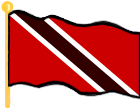Mangoes
This song is in Trinidadian Creole, an English-based Creole with a large French lexicon.
Mangoes
Mangoes
Folk Song
Folk Song
(Trinidadian Creole)
(English)
Mangoes, mangoes, mangoes.
Mango vert, mango teen
Mango vert, mango teen
I want ah penny to buy
Mango vert, mango teen
Give meh ah penny to buy
Mango vert, mango teen
Mango doo dou sou se matin
Savez-vous all for me
Mango doo dou sou se matin
Savez-vous all for me.
Mangoes, mangoes, mangoes.
Mango vert (1), mango teen (2)
Mango vert, mango teen
I want a penny to buy
Mango vert, mango teen
Give me a penny to buy
Mango vert, mango teen
Mango doodou (3) sousay-matin (4)
Savez-vous (5) all for me
Mango doodou sousay-matin
Savez-vous all for me.
Notes
(1) This is sometimes spelled as "vere". "Vert" in French means "green".
(2) (3) (4) "Mango vert", "mango teen", "mango doudou" (also spelled doodoo, doo-douce & doudouce) and "mango sousay-matin" are all types of mangoes in Trinidad and Tobago.
(5) "Savez-vous" means "do you know" in French. But it's pronounced like the English word "save"… like save-ay-vous. It seems to be a play on words in French and English.
*****
The 1st verse is often repeated. In different versions of this song, the types of mangoes are changed in the 2nd verse.
One version replaces "Mango vert mango teen" with:
Mango vert, mango rose.
Other types of mangoes that you might hear are:
Mango starch
Julie
Abricot
Calabash
Turpentine
Cora
Zapico
Comments
"The first calypso ever recorded was 'Mango Vert' by Lovey's String Band way back in 1912. We know this song as the folk song Mangoes. Most Trinis would have learnt this little ditty in primary school (lyrics above)." – The Heritage Project Trinidad and Tobago

(2nd Verse)
Mangoes, mangoes, mangoes.
Mango starch, mango teen
Mango starch, mango teen,
I want a penny to buy
Mango starch, mango teen
Want a penny to buy
Mango starch, mango teen
Mango zapico, calabash
Savez-vous all for me
Mango zapico, calabash
Savez-vous all for me.
(3rd Verse)
Mango, mango, mango,
Mango starch, mango vert
Mango starch, mango vert,
I want a penny to buy
Mango starch, mango vert
Give me a penny to buy
Mango starch, mango vert
Mango zapico, calabash
Savez-vous all for me
Mango zapico, calabash
Savez-vous all for me.
Mango, mango, mango.
Thanks!
Thanks and Acknowledgements
This song can be found on Olive Walke's album, La Petite Musicale - Caribbean Folk Songs (1963).

























